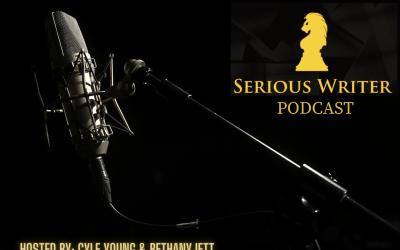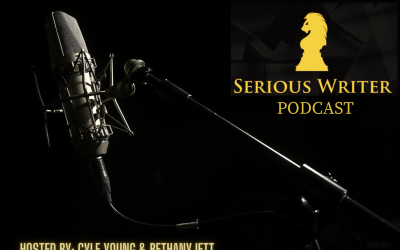Say you’re pitching an agent or an editor, and you worked countless hours on perfecting that query.
Now you’ve got their attention, or you’re sitting face-to-face with them at a conference.
Then come the words, “Please send me your book proposal.”
Gulp. Hadn’t prepared for that. What now?
Don’t panic. A book proposal is basically a 10-50 page document that essentially tells the publisher why they should publish your project, and why you’re the best person to write it.
Now, don’t let that 10-50 number scare you. Your first three chapters (or children’s manuscript if you write PB or board books) will take up the majority of that space.
As for the rest of it? Here we go…
The Overview
Potentially the most important part of your proposal, aside from the marketing section, is the overview.
Particularly for nonfiction, you’ll want to answer some questions:
- What is the problem your book will fix?
- How will your book help readers?
- Why are you the person to write this book?
Convince the publisher that your book is necessary and you’re on your way!
Manuscript Details
Summarize the basic information of your book in this section:
- Genre
- Word Count
- Completion Date (As a general rule, novels and picture books should be complete.)
Target Audience
Understanding your target demographic is important.
Who is going to read your book? Who are you writing it for?
We like to include a specific target audience and then broaden it with a secondary audience, tertiary audience, and affinity groups or organizations.
Remember that sometimes you’re writing to one audience but marketing to another. In the case of children’s books, your target audience is little ones, but they aren’t the ones who make purchases.
The Marketing Section
The marketing section is vital.
Now, more than ever, publishers want to only take on qualified writers. This means you book speaking engagements regularly, have a decent social media following, have an ample email list, and plan to expand all of those every year.
Start off this section with a headshot and bio, highlighting aspects that work in your favor as to why you’re the person to write this book.
Share those platform numbers. Don’t worry if you don’t have 170K followers. Flaunt what you’ve got.
Some quick tips:
- Quantify Everything: Show via numbers your current platform (“I have 30K followers across all my social media platforms), and the current growth you’ve experienced. Maybe you only have 200 email subscribers, but if you have an open rate of 70%, include that. Show how you plan to grow and how much you’ve grown already.
- Don’t Say: “I don’t have platform,” or even worse: “I’ll do the writing and people will flock to my book. You’ll see.” No, they won’t. People buy who they know, good writing or not.
- Be Creative: Maybe you don’t have a huge social media following, but maybe you regularly speak at schools or frequently are on staff at conferences. Mention what types of platform you do have.
- Experience Can Count: Publishers would much rather take on an “#OWNvoices” book from an author with a little less platform than an author who is writing a book on a similar topic, but doesn’t have personal experience with that subject. If you have a personal connection with the text or characters, include it.
This section also includes your endorsement list.
Who do you know, relevant to your book topic, that will endorse and promote your book? If you can obtain an endorsement ahead of time, get it!
If your endorser agrees to share and promote your book on their social media following, TV show, radio show, podcast, or share with their email list, include that, too. #BorrowedPlatform
The Synopsis or the Chapter Breakdowns
For novelists: Basically in one to three pages, single-spaced, you’ll explain what happens in your book. Remember, “only the facts, ma’am.”
Don’t tell every side plot or character. Just stick with the essentials, put it in third person present (yes, even if you write in a different tense in the book), capitalize the character’s name when you introduce them (“DANNY BELTE arrives at Emmanuel Academy on Tuesday”), and please, please, please include the ending.
Yes, mystery writers, even you.
Publishers will want to know how it ends.
As for nonfiction writers, you’ll provide an outline for each of the chapters. You don’t have to go incredibly in-depth, but a simple formula is to share the subject matter and reader takeaways.
You don’t need to share all the details of every story or illustration you’ll be writing about. Just let the publisher know how the chapters will flow.
The Comparative Titles
The Comps section of a proposal…ay yi yi.
Yes, there are books out there on the market like yours. Please don’t say, “There’s nothing like it.”
And publishers will want to know what’s selling NOW that’s similar to your book.
Remember these fast and quick tips:
- No Self-Published Titles: Unless they happen to be selling millions of copies, only use traditionally published books.
- Published in the Last 10 Years (Five is Better): Yes, that means “Harry Potter” and “Lord of the Rings” can’t be comp. titles.
- Be Realistic: Don’t put every single number one bestselling book in your genre just to make it sound like your book will sell, sell, sell. Put some B-list and C-list titles in there. Really do your research and ACTUALLY read the books in your genre. Don’t just look at an Amazon description and hope it’s similar.
Some places to look for comps are Amazon, bookstore shelves in your genre, and Goodreads.
The First Three Chapters
These are by far the most important part of any proposal. Make sure those first three chapters positively glow, especially that first page.
And by first three, we mean start with Chapter One, not the Prologue or Introduction.
Although publishers will want to know your platform and comp. titles, they care most about this. So have as many eyes on this as possible before you submit.
Proposal Resources
Click here to get the SW Nonfiction Proposal Outline for free.Book Proposals for Different Genres – Genre Chat
Book Proposals – Writers Chat
Book Proposals: Mastering the Comparative Section – Writers Chat
10 Ways to Catch an Agent’s Eye – Serious Writer Academy
How to Write a Book Proposal – Jane Friedman
Why Every Author Needs a Book Proposal – Almost an Author
A Simple Proposal Formula – Almost an Author
Proposals Do’s and Don’ts – Almost an Author





0 Comments